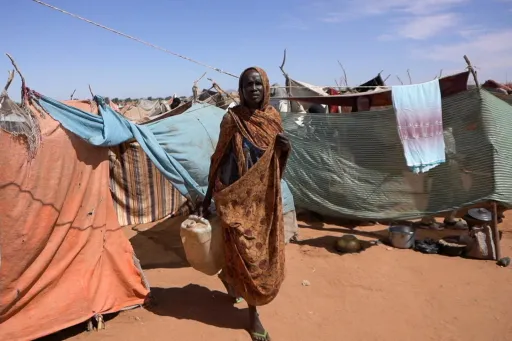By Ozcan Akinci
The Eastern Mediterranean has long been more than a geographical intersection between continents – a field of power projection, energy rivalry, and geopolitical intrigue.
In recent years, the island of Cyprus has re-emerged as a focal point of Europe’s ‘green transformation’ narrative, marketed as a bridge between the European Union’s clean energy ambitions and the technological innovations of its regional partners.
Yet behind this vision of sustainability lies a complex network of financial channels and offshore structures that raise questions about transparency, regulatory oversight, and the blurred frontier between energy and security.
Over the last decade, the Greek Cypriot administration has positioned itself as a regional energy hub.
Its ‘Renewable Cyprus’ programme attracted hundreds of millions of euros in EU funds, offering incentives for solar, wind, and hydrogen initiatives.
Officially, this transformation aimed to reduce carbon dependency and align with the European Green Deal.
However, as multiple financial audits and media investigations have suggested, many of these ‘energy startups’ were little more than paper-based entities, registered in Nicosia or Limassol, but with directors and capital flows tracing back to foreign intermediaries.
Reports from the European Court of Auditors and several anti-money laundering watchdogs have repeatedly warned that the Greek Cypriot administration’s investment framework remains vulnerable to misuse.
The overlap between legitimate green finance and opaque offshore holdings creates what researchers describe as a “regulatory grey zone,” where energy innovation and speculative capital often become indistinguishable.
The Council of Europe’s Committee of Experts on the Evaluation of Anti-Money Laundering Measures and the Financing of Terrorism (MONEYVAL) has also underlined this vulnerability.
While its recent assessment noted that the Greek Cypriot administration has “enhanced its framework” against money laundering and terrorist financing in correspondent banking, the very need for such emphasis underscores how deeply these structural deficiencies remain embedded in the island’s financial system.
For instance, the EPPO has launched investigations into the Vasiliko LNG terminal project, financed in part through EU funds, including allegations of procurement fraud and misappropriation.
The EPPO has also alleged that, despite funding from the Connecting Europe Facility, the project has considerably lagged its original completion schedule.
This pattern is not new, but it is now intersecting with Europe’s green energy agenda in ways that amplify both financial and political risks.
Offshore shadows and the European blind spot
What makes the Cypriot case particularly significant is not merely financial opacity, but the convergence of civilian and security-oriented technologies.
Several EU-funded renewable projects on the island, initially designed for smart grid development and energy optimisation, reportedly integrated data systems and sensors with dual-use potential.
Open-source intelligence (OSINT) reviews and European parliamentary briefings have highlighted that components of these systems were supplied through partnerships with technology firms also active in defence and cyber-monitoring sectors.
This convergence reflects a broader regional trend: energy infrastructure increasingly doubles as a tool of information control.
RelatedTRT World - Cyprus’s unspoken third actor problem: Britain's sovereign military base areas
Across the Eastern Mediterranean, the distinction between energy and intelligence networks is becoming blurred, with telecommunications, surveillance systems, and energy logistics sharing the same digital backbone.
For policymakers in Brussels, this raises an uncomfortable dilemma about how to sustain the EU’s green investment drive without indirectly feeding opaque technological ecosystems that operate beyond democratic scrutiny.
The Greek Cypriot financial ecosystem, long accustomed to offshore banking, provides a fertile ground for such hybrid operations.
Companies registered as “renewable consultancies” or “green logistics providers” can channel funds from multiple jurisdictions, including investment vehicles headquartered in Tel Aviv, Zurich, or Luxembourg.
This does not imply illicit intent per se; rather, it highlights how the fragmentation of European financial regulation allows multi-layered ownership structures to thrive with minimal disclosure.
According to the European Parliament’s 2023 transparency review, more than 40 percent of Cyprus-based companies receiving cross-border renewable energy funding disclosed incomplete beneficial ownership information.
These structural blind spots make it exceedingly difficult to trace where European public funds ultimately end up, or whether they inadvertently reinforce geopolitical asymmetries.
In the Eastern Mediterranean context, such asymmetries carry direct strategic consequences. When financial systems and technological infrastructure intersect, control over data, logistics, and critical supply chains become as decisive as control over energy resources themselves.
The result is a subtle form of dependency, less visible than military presence, but equally enduring.
European institutions have begun acknowledging the risks. The European Commission’s 2024 Anti-Money Laundering Directive draft introduces stricter oversight for green investment flows, explicitly referencing vulnerabilities in “peripheral jurisdictions”.
Still, implementation remains slow, and political considerations, especially within energy diplomacy, often override compliance efforts. As one European energy policy analyst noted in Euractiv, “the EU wants to be green, but not at the cost of losing geopolitical access.”
In this balancing act, the Greek Cypriot administration has effectively become both gatekeeper and beneficiary: an intermediary linking European funding pipelines with regional energy and technology partners.
The opacity of offshore arrangements ensures flexibility but also shields accountability from public scrutiny.
Regional implications and Türkiye’s strategic calculus
For Türkiye, which lies at the centre of East–West energy corridors, these developments have tangible implications.
The proliferation of unregulated or hybrid energy networks in the Eastern Mediterranean complicates Ankara’s efforts to establish transparent and mutually beneficial energy partnerships.
It also challenges broader regional stability by creating a fragmented architecture where private intermediaries, rather than states, often set the operational agenda.
From a security standpoint, the diffusion of dual-use technologies under the guise of renewable infrastructure introduces new layers of surveillance and cyber vulnerability across the region.
Türkiye’s emphasis on regulated energy corridors and integrated transmission routes stands in contrast to the uncoordinated offshore framework evolving to its south.
Ultimately, the question extends beyond Cyprus or Israel; it touches the core of Europe’s strategic integrity.
Can the EU maintain credibility as a promoter of clean energy if the financial arteries of that transition remain opaque? Can “green transformation” coexist with unmonitored technological entanglements that bypass regulatory oversight?
The story of the Eastern Mediterranean’s offshore energy networks is not merely about hidden money or unregistered companies; it is about how 21st-century power is exercised through finance, technology, and infrastructure.
Cyprus, standing at the crossroads of these systems, embodies both the promise and the peril of Europe’s green ambitions.
As Brussels seeks to reconcile energy security with moral leadership, the transparency of its periphery will serve as the ultimate test.
The island’s offshore shadows remind policymakers that sustainability without accountability is merely another form of dependency.
For the EU, the path to genuine sustainability will depend not on more funding but on clearer oversight, because in the new geopolitics of energy, sunlight remains the best disinfectant.
























